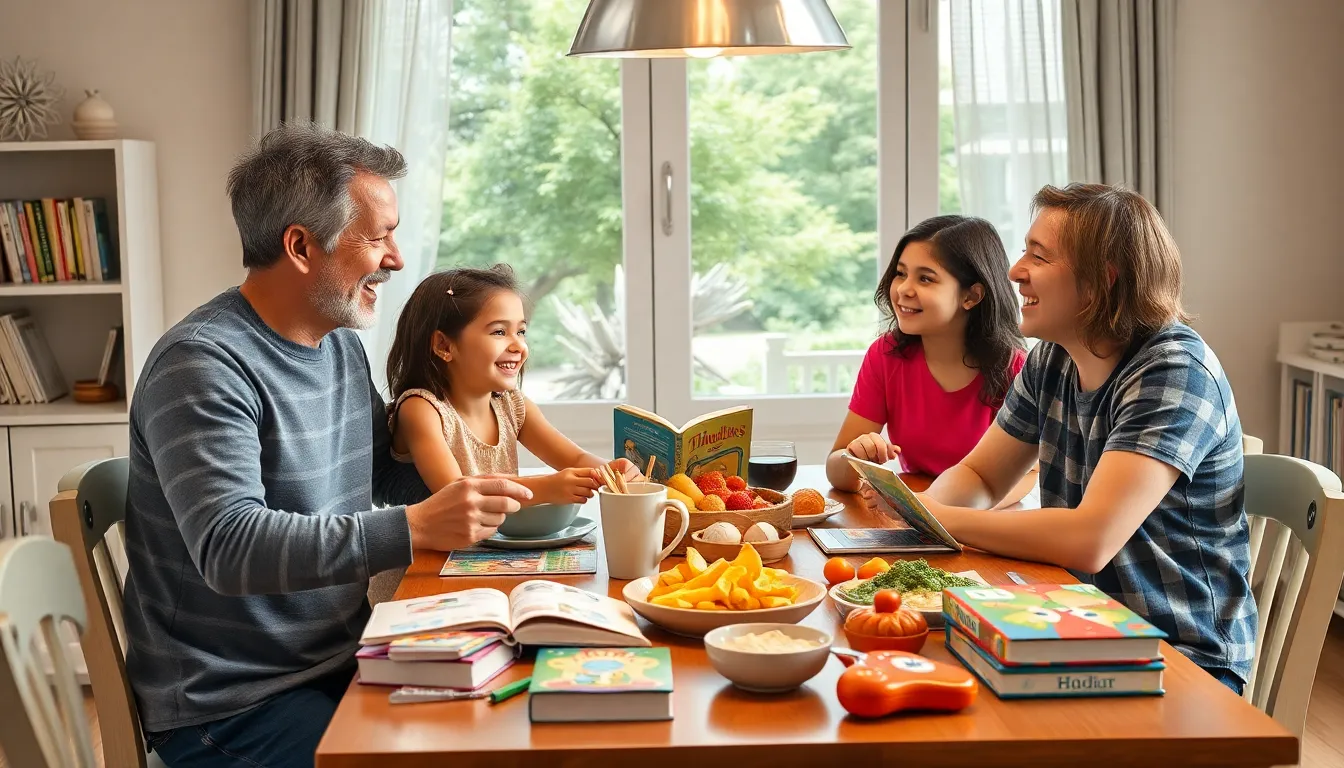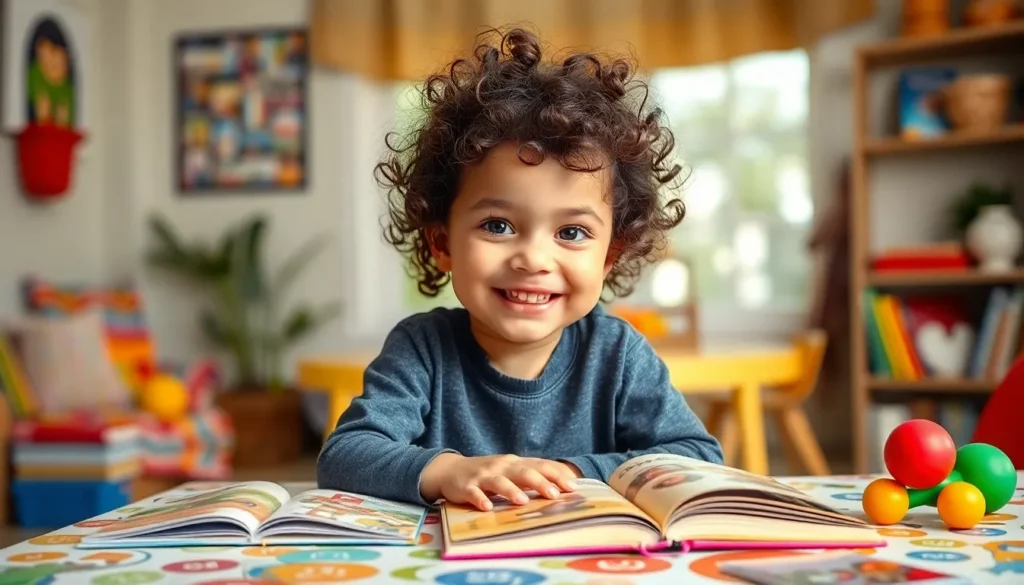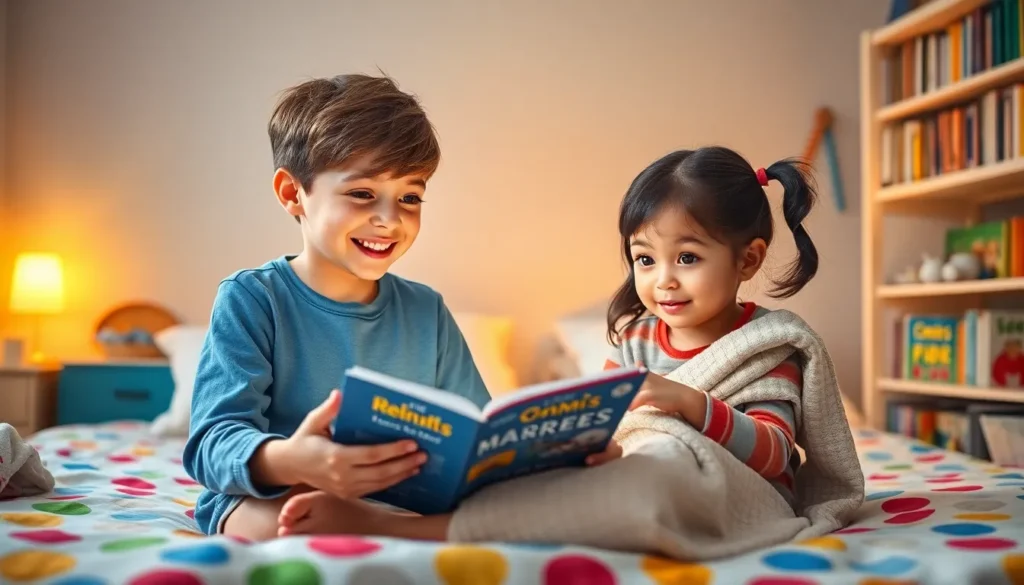In today’s interconnected world, raising bilingual kids offers a treasure trove of benefits that extend far beyond just knowing two languages. Parents who embrace bilingualism often witness enhanced cognitive skills, improved problem-solving abilities, and a deeper cultural appreciation in their children. As globalization continues to shape our lives, the ability to communicate in multiple languages becomes an invaluable asset.
However, the journey to raising bilingual children isn’t always straightforward. Parents face unique challenges, from choosing the right languages to navigating social dynamics. Understanding effective strategies can make all the difference in fostering a love for language and ensuring children thrive in both linguistic environments. With the right approach, families can unlock the full potential of bilingualism, setting their children up for success in an increasingly diverse world.
Table of Contents
ToggleUnderstanding Bilingualism
Bilingualism refers to the ability to speak and understand two languages fluently. Understanding bilingualism involves recognizing its benefits and debunking myths that may deter parents from pursuing this path.
Benefits of Raising Bilingual Kids
Bilingual kids often experience various advantages, including:
- Cognitive skills: Research shows that bilingualism enhances cognitive development, including improved memory and multitasking abilities.
- Problem-solving abilities: Bilingual children exhibit superior problem-solving skills due to their experience in navigating two linguistic systems.
- Cultural appreciation: Exposure to multiple languages fosters a greater understanding and appreciation of diverse cultures, enhancing social awareness.
- Academic performance: Studies indicate that bilingual students frequently achieve higher academic results, given their improved communication skills and critical thinking.
- Career opportunities: In a globalized economy, bilingualism provides a competitive edge, opening doors to diverse career paths and international roles.
Common Myths About Bilingualism
- Language confusion: Some believe that bilingual kids experience confusion between languages, but research supports that language separation occurs naturally as they develop.
- Language delay: A common misconception is that learning two languages delays speech development; however, bilingual children typically reach language milestones within typical timelines.
- Limited language proficiency: Some fear that children won’t achieve fluency in either language. Studies reveal that with proper exposure, children can achieve high proficiency in multiple languages.
- Bilingualism is only for certain families: The belief that only certain families can raise bilingual kids overlooks the fact that any family can successfully foster bilingualism, regardless of background.
- Bilingual education is unnecessary: Some argue that bilingualism isn’t essential; yet, the cognitive, social, and economic benefits demonstrate its value in today’s interconnected world.
Strategies for Raising Bilingual Kids

Effective strategies play a critical role in raising bilingual children. These approaches enhance language acquisition and foster a positive, engaging learning environment.
Language Exposure at Home
Consistent language exposure at home is essential for bilingual development. Parents can designate specific times or activities for each language, ensuring children interact naturally in both. For example, speaking one language during meals and another during playtime encourages balanced proficiency. Engaging with bilingual books, songs, and videos can further reinforce both languages. Research indicates that children thrive in environments rich with diverse linguistic interactions, making consistent exposure key.
Educational Resources and Tools
Utilizing educational resources and tools streamlines the bilingual learning process. Various apps, games, and programs cater to bilingual education, offering interactive and immersive experiences. Parents should consider enrolling children in language classes or programs that emphasize cultural context alongside language skills. Libraries often provide access to bilingual materials, and online platforms offer a wealth of educational videos and games. By integrating these resources, children gain valuable exposure while learning in enjoyable settings.
Challenges in Raising Bilingual Kids
Raising bilingual kids presents several challenges that can impact language development and cultural identity. Understanding these challenges helps parents navigate the complexities of bilingual upbringing.
Overcoming Language Mixing
Language mixing, where children blend words or structures from both languages, often occurs in bilingual environments. Parents can address this by fostering clear language boundaries. Setting specific times for each language, such as designated language days or contexts, encourages balanced use. Consistent modeling of each language helps reinforce proper usage. Engaging in conversations that draw on both languages, while gently correcting mistakes, promotes clarity and fluency. Exposure to distinct cultural materials, like books and media, in each language further supports separation and understanding.
Navigating Cultural Identity
Bilingual children may grapple with cultural identity, feeling connected to multiple backgrounds. Parents can mitigate this challenge by emphasizing the value of both cultures. At home, sharing traditions, foods, and stories from each culture strengthens the child’s sense of belonging. Participation in community events related to both cultures reinforces this connection. Encouraging children to engage with peers from diverse backgrounds fosters openness and appreciation. Addressing potential feelings of isolation from either culture promotes a balanced identity and enhances self-esteem.
Success Stories of Bilingual Families
Bilingual families often share inspiring stories that illustrate the benefits and joys of raising children in a multilingual environment. These experiences highlight the daily practices and insights gained along the way.
Personal Experiences and Insights
Many parents report noticeable advantages in their children’s cognitive abilities. For instance, one family shares how their daughter solved math problems more efficiently in both languages. Another parent notes that their son easily transitions between languages when interacting with peers, showcasing adaptability and social skills. Families often emphasize the enriching experiences gained from cultural festivities, allowing children to embrace their heritage while forming connections with diverse communities.
Tips from Bilingual Parents
Bilingual parents frequently share effective strategies for maintaining language balance. They suggest:
- Creating a Language Routine: Parents allocate specific days or periods for each language, ensuring consistent exposure.
- Utilizing Media Resources: Many families incorporate bilingual books, movies, and music, which increase engagement and learning while making both languages enjoyable.
- Encouraging Conversations: Parents recommend initiating discussions that blend both languages, reinforcing each language’s importance in daily life.
- Participating in Cultural Events: Families engage in community events that celebrate their languages, fostering identity and pride.
By following these practices, bilingual families report improved fluency and a deeper connection to both cultures, ensuring their children thrive in a multilingual world.
Conclusion
Raising bilingual kids is a rewarding journey that fosters cognitive growth and cultural appreciation. By embracing effective strategies and maintaining consistent language exposure, parents can help their children thrive in a multilingual environment. The benefits extend beyond language skills, enhancing problem-solving abilities and opening doors to future opportunities.
While challenges may arise, understanding and addressing them can lead to a more balanced bilingual experience. Celebrating both languages and cultures not only strengthens a child’s identity but also boosts their confidence. With dedication and the right resources, parents can cultivate a love for languages that lasts a lifetime.




